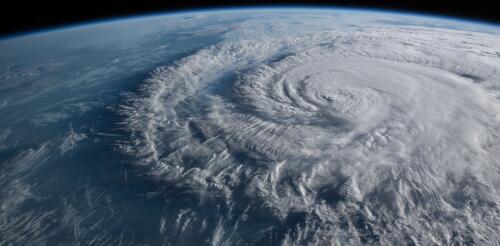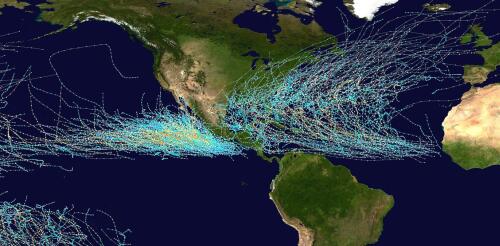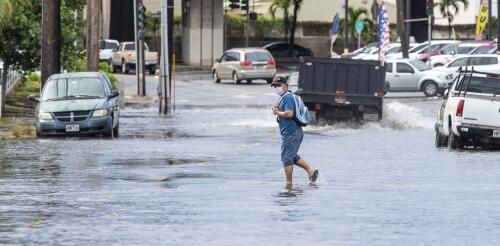Extreme weather
El Niño is officially here, and while it’s still weak right now, federal forecasters expect this global disrupter of worldwide weather patterns to gradually strengthen. That may sound ominous, but El Niño – Spanish for “the little boy” – is not malevolent, or even automatically bad. Here’s what forecasters expect, and what it means for the U.S. What is El Niño? El Niño is a climate pattern that starts with warm water building up in the tropical Pacific west of South America. This happens every three to seven years or so. It might last a few months or a couple of years. Normally, the trade winds push warm water away from the coast there, allowing cooler water to surface. But when the trade winds weaken, water near the equator can heat up, and that can have all kinds of effects through what are known as teleconnections. The ocean is so vast – covering approximately one-third of the planet, or about 15 times the size...
Flash droughts develop fast, and when they hit at the wrong time, they can devastate a region’s agriculture. They’re also becoming increasingly common as the planet warms. In a new study published May 25, 2023, we found that the risk of flash droughts, which can develop in the span of a few weeks, is on pace to rise in every major agriculture region around the world in the coming decades. In North America and Europe, cropland that had a 32% annual chance of a flash drought a few years ago could have as much as a 53% annual chance of a flash drought by the final decades of this century. The result would put food production, energy and water supplies under increasing pressure. The cost of damage will also rise. A flash drought in the Dakotas and Montana in 2017 caused US$2.6 billion in agricultural damage in the U.S. alone. Stunted corn in Nebraska struggles to grow during the 2012 flash drought that covered much of the cent...
The Atlantic hurricane season starts on June 1, and forecasters are keeping a close eye on rising ocean temperatures, and not just in the Atlantic. Globally, warm sea surface temperatures that can fuel hurricanes have been off the charts in the spring of 2023, but what really matters for Atlantic hurricanes are the ocean temperatures in two locations: the North Atlantic basin, where hurricanes are born and intensify, and the eastern-central tropical Pacific Ocean, where El Niño forms. This year, the two are in conflict – and likely to exert counteracting influences on the crucial conditions that can make or break an Atlantic hurricane season. The result could be good news for the Caribbean and Atlantic coasts: a near-average hurricane season. But forecasters are warning that that hurricane forecast hinges on El Niño panning out. Ingredients of a hurricane In general, hurricanes are more likely to form and intensify when a tropical low-pressure system encounter...
The official 2023 hurricane season forecasts were just released, and while the Atlantic may see an average storm season this year, a busier-than-normal season is forecast in the eastern Pacific, meaning heightened risks for Mexico and Hawaii. A big reason is El Niño. El Niño typically means trouble for the Pacific and a break for the Atlantic coast and Caribbean. But while this climate phenomenon is highly likely to form this year, it isn’t a certainty before hurricane season ramps up this summer, and that makes it harder to know what might happen. It’s also important to remember that even in quiet years, a single storm can cause enormous destruction. As climate scientists, we study how climate patterns related to the frequency and intensity of hurricanes – information that is used to develop seasonal forecasts. Here is a quick look at how El Niño affects storms and why it tends to cause opposite effects in two basins separated only by a...
Honolulu has lost more than 5 miles of its famous beaches to sea level rise and storm surges. Sunny-day flooding during high tides makes many city roads impassable, and water mains for the public drinking water system are corroding from saltwater because of sea level rise. The damage has left the city and county spending millions of dollars on repairs and infrastructure to try to adapt to the rising risks. Future costs will almost certainly be higher. More than US$19 billion in property value, at today’s dollars, is at risk by 2100 from projected sea level rise, driven by greenhouse gas emissions largely from the burning of fossil fuels. Elsewhere in Honolulu County, which covers all of Oahu, many coastal communities will be cut off or uninhabitable. Unwilling to have their taxpayers bear the full brunt of these costs, the city and county sued Sunoco LP, Exxon Mobil Corp. and other big oil companies in 2020. Their case – one of more than two dozen involving U.S. ci...




